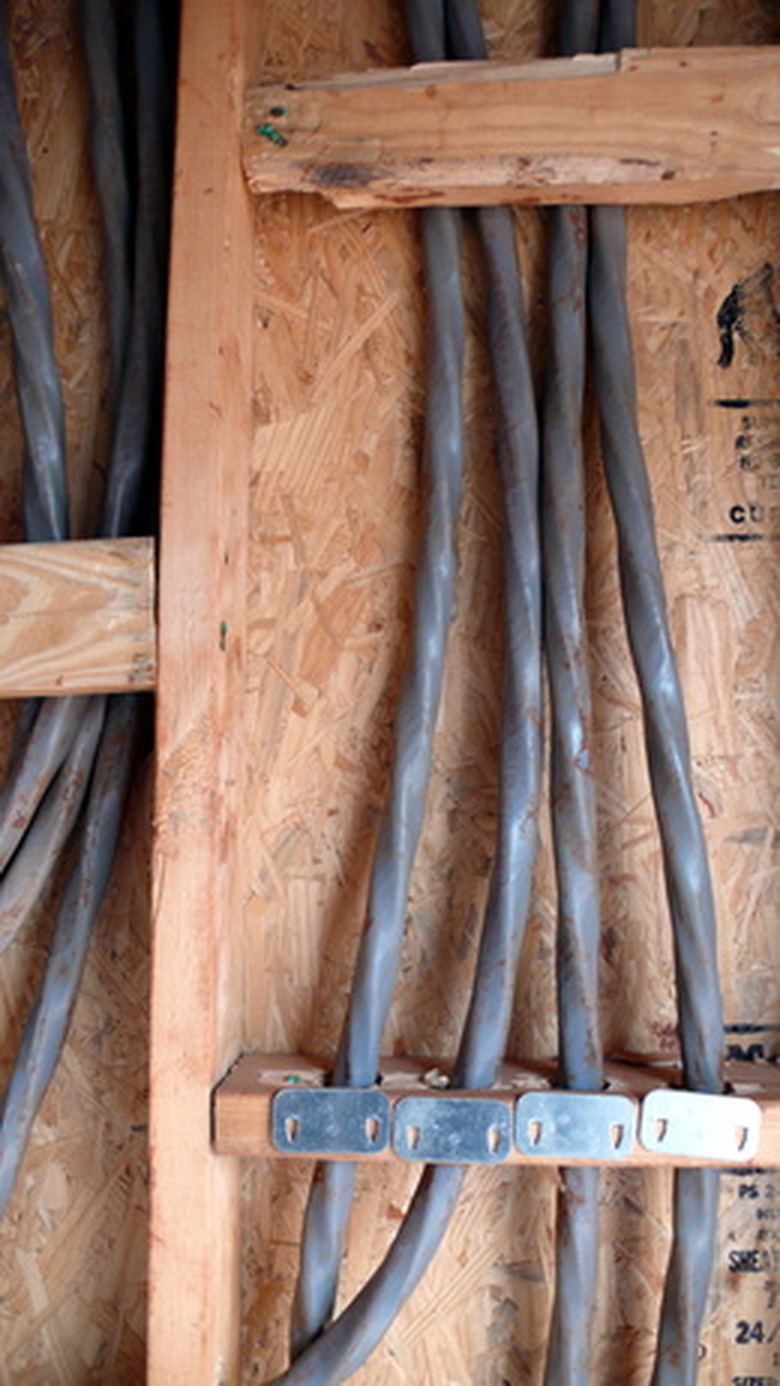How To Calculate Wire Size On A Standby Generator
Things Needed
-
Wire ampacity table (see Resources)
-
Wire resistance table (see Resources)
Standby generators for home and small commercial applications connect to loads using the standard 120/240V electrical system. The appropriate wire size depends on the voltage, the current, the circuit breaker at the generator and the length of the wire. The wire must be rated for the system voltage and it must be able to carry the current. It should also match or exceed the rating of the circuit breaker, and the length should not cause a voltage drop of more than 3 percent. Taking all these factors into account, typical home installations will require wire sizes between 14 AWG and 6 AWG.
Step 1
Check the generator's nameplate for the system voltage in volts and the generator power in watts. The system voltage should be 120/240V. The generator power may range from 1000W to 10,000W.
Step 2
Note the amp rating of each circuit breaker. There may be just one main breaker, or a main breaker and several branch breakers. The cable connected to a single main breaker, or the cables connected to the branch breakers, must be appropriate for the current rating of the breaker. The breakers will typically range in size from 15A to 50A. The minimum corresponding wire sizes will range from 14 AWG to 6 AWG, according to standard ampacity tables (see Resources).
Step 3
Calculate the full load current that each wire must carry. If there is only a main circuit breaker, the full load current will be the generator power in watts divided by the voltage. For example, if the generator power is 2400W and it operates at 120V, the full load current is 20A.
2400 / 120 = 20
If there are branch circuit breakers, the full load current will be the size of the connected load in watts divided by the voltage of the load. For a load of 1500W operating at 120V, the full load current is 12.5A.
1500 / 120 = 12.5
If you do not know the size of the connected load, use the current rating of the branch circuit breaker as the full load current.
Step 4
Check the wires for a voltage drop of 3 percent or less. For small standby generators located close to the loads, this is not usually a problem. For units located farther away, where the required cable size is close to the full load current, it can affect operation. Use cable resistance tables to look up the resistance for each wire. For a 14 AWG wire, the resistance is 2.5 ohms per 1000 feet. The voltage drop is current times resistance. Thus, for a current of 12.5A, the voltage drop would be:
12.5A * 2.5 ohms = 31.25V per 1000 feet of length
For 100 feet, the voltage drop would be one-tenth as much, or 3.125V. This means that a 100-foot-long run of 14 AWG wire carrying 12.5A would still have an acceptable voltage drop. A run of more than 115 feet would exceed the 3-percent or 3.6V voltage drop limit for 120V. In that case, you would have to use a larger wire, and repeat this calculation with a 12 AWG or 10 AWG wire.
